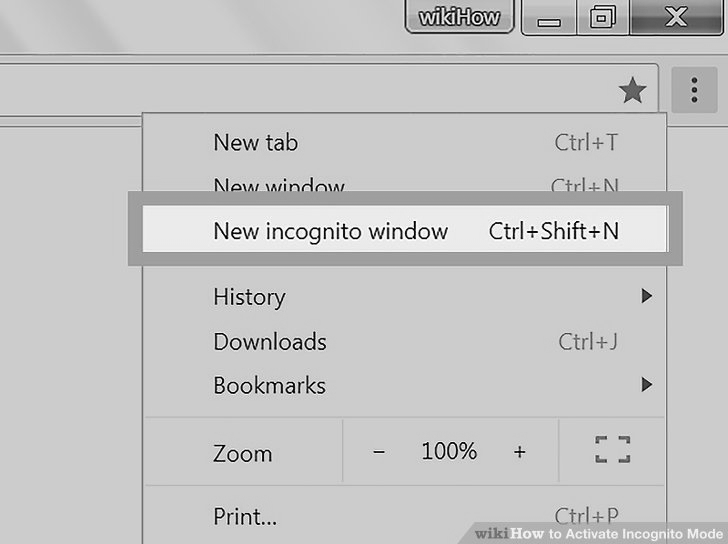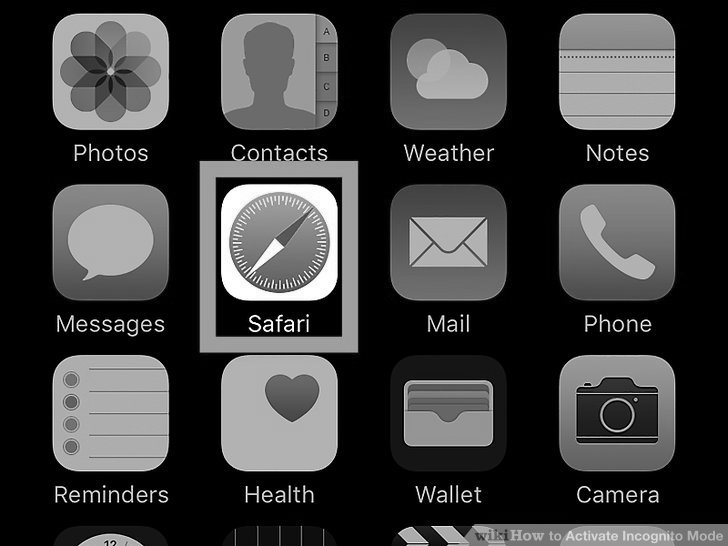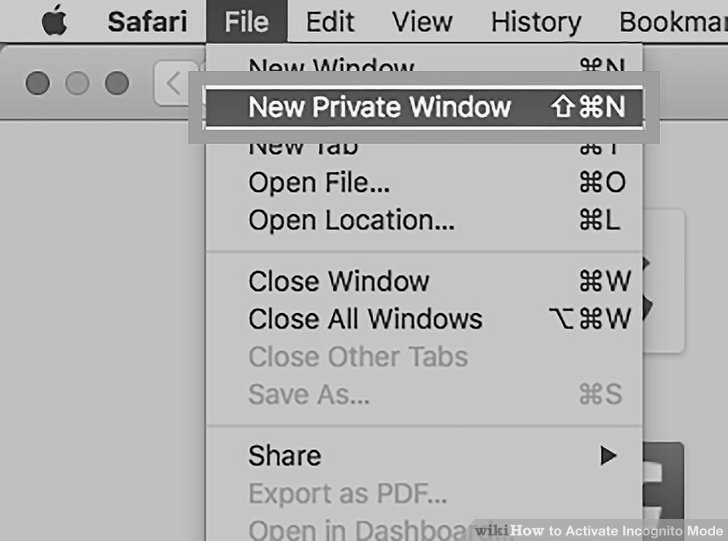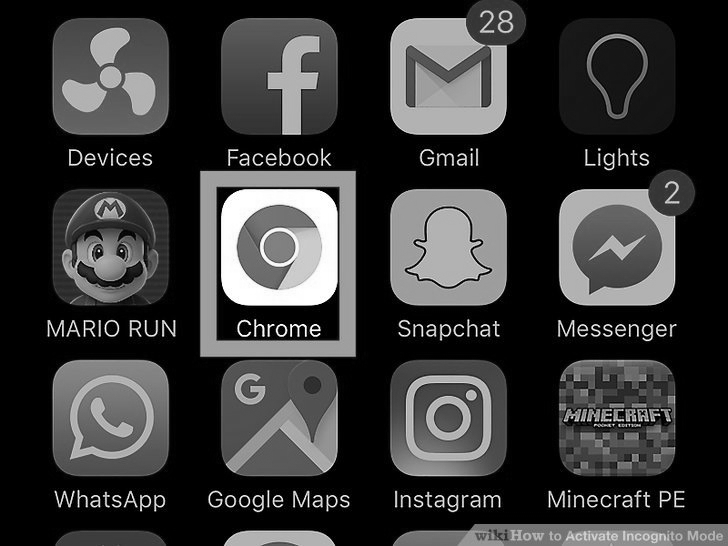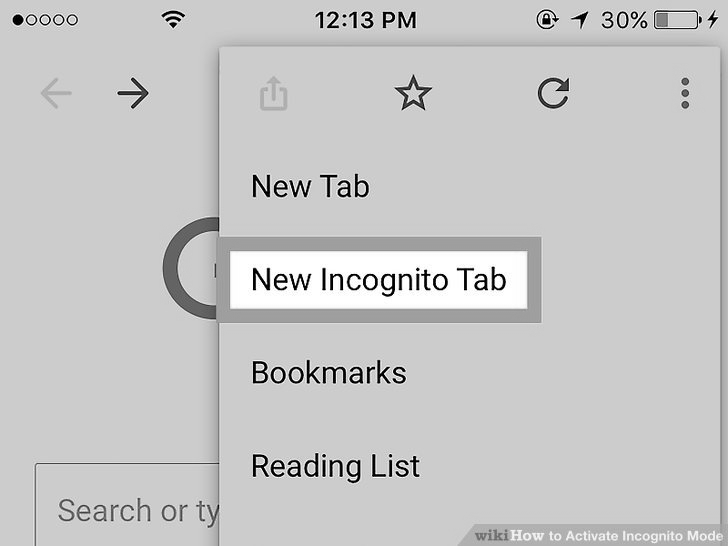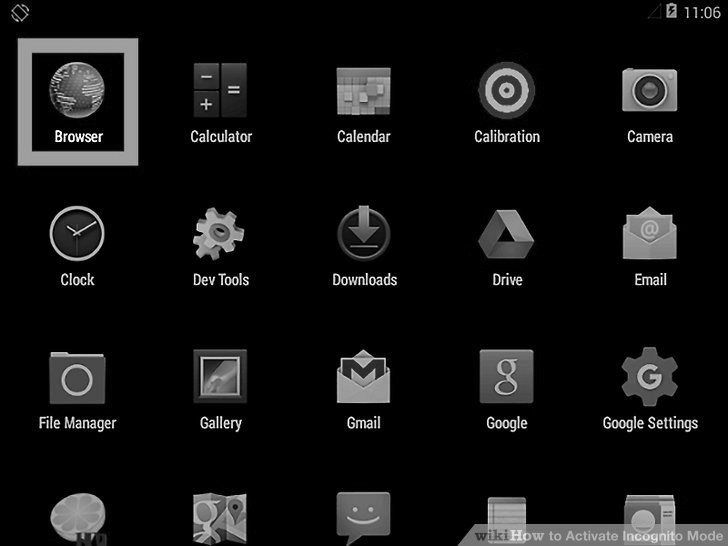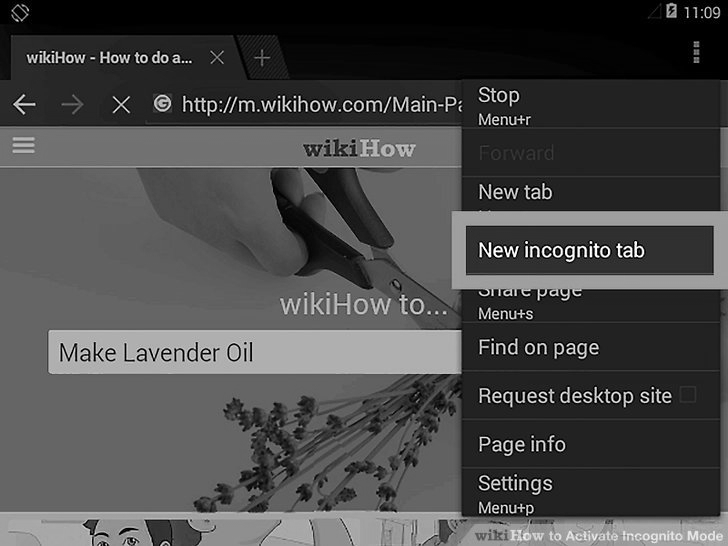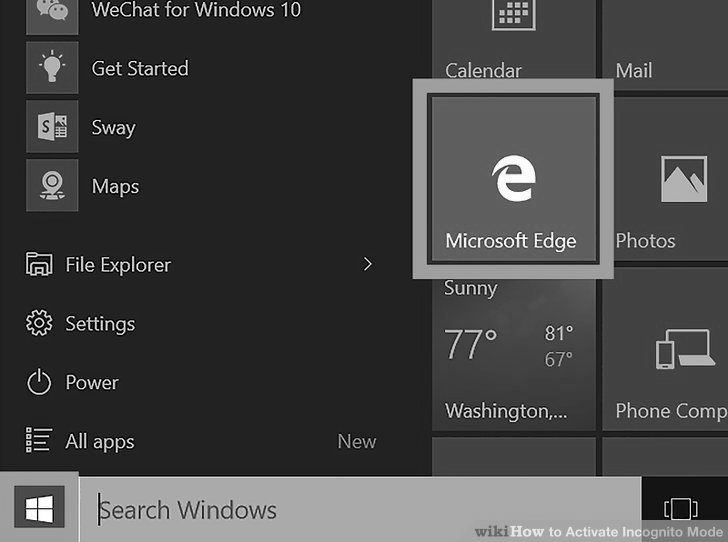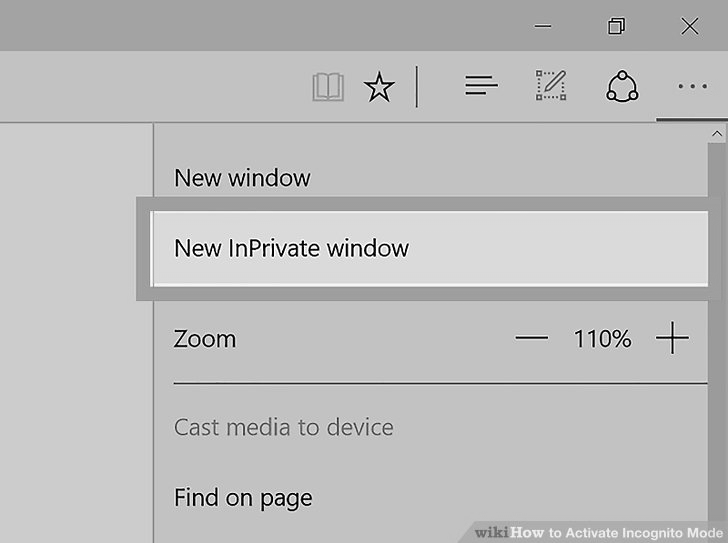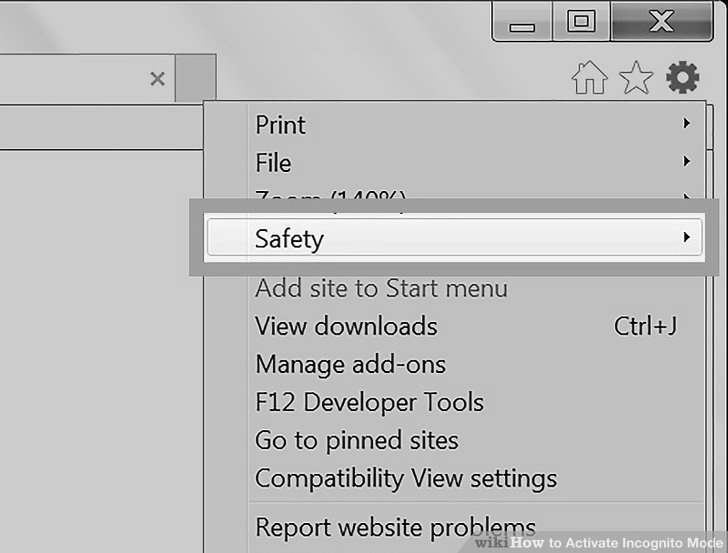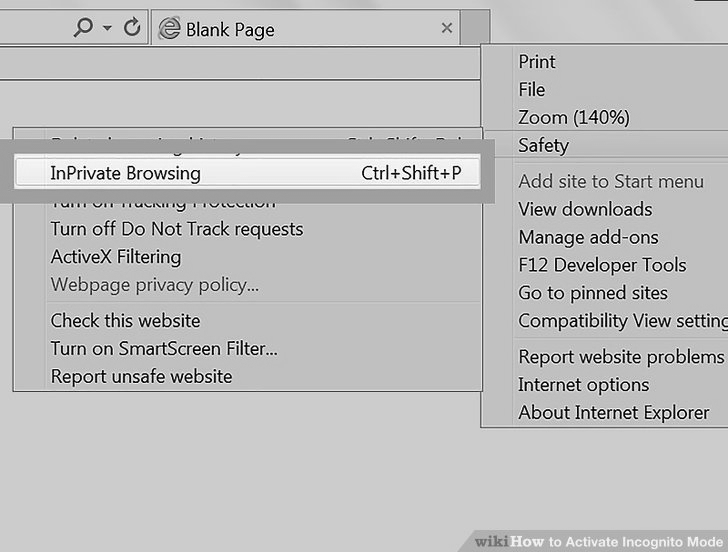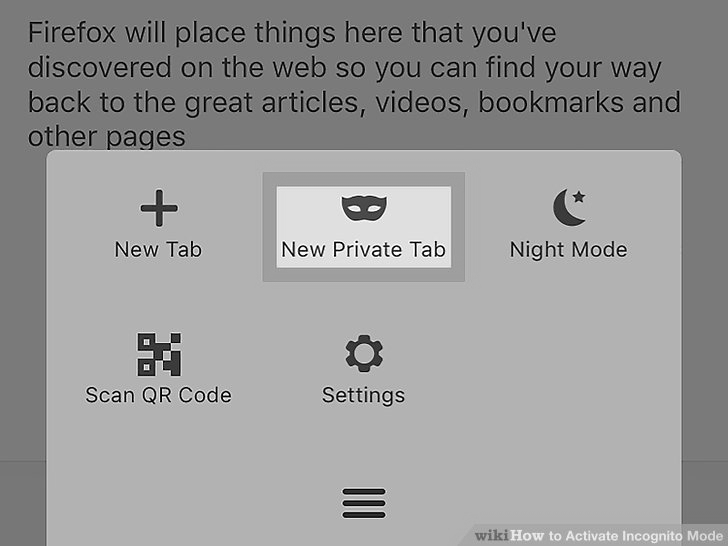This will teach you how to enable your browser’s “incognito” window, which will allow you to browse without saving your history.
Method 1. Chrome (Desktop)
- Open the Google Chrome browser. Its icon resembles a yellow, red, and green circle surrounding a blue sphere.
2. Click ⋮. This option is in the top right corner of the Chrome window, directly below the X.
3. Click New incognito window. It’s toward the top of the drop-down menu here. Clicking this option prompts a new Chrome window to open in incognito mode.
- You can also press Ctrl+⇧ Shift+N (Windows) or ⌘ Command+⇧ Shift+N (Mac) to open a new incognito tab quickly.
- Once you close your incognito tab, any downloads and page-viewing history from your private browsing session will be erased.
Method 2. Safari (iPhone)
1. Open the Safari app. It looks like a blue compass on a white background.
2. Tap the two overlapping boxes button. This icon is in the bottom right corner of the screen.
3. Tap Private. It’s in the bottom left corner of the screen.
4. Tap +. It’s at the bottom of the screen. Doing so will open a new window in Private mode from which you can search without Safari storing your history.
- To go back to your regular browsing window, tap +, tap Private again, and tap Done.
- Closing the Safari app won’t close your Private browsing session. You’ll need to swipe left on any pages you want to close in order to do so.
Method 3. Safari (Desktop)
1. Open the Safari browser. Safari’s icon resembles a blue compass.
2. Click File. It’s one of the options in the toolbar that’s in the top left corner of the screen.
3. Click New Private Window. Doing so will open Safari’s version of incognito mode in which you can browse without Safari remembering your visited sites or downloads.
- You can also hold down ⌘ Command and ⇧ Shift and tap N to bring up a new private window.
- Safari’s Private Window has a darker color scheme than a standard browsing window.
Method 4. Chrome (Mobile)
1. Open the Google Chrome app. If you don’t have it yet, you can download it from the App Store (iPhone) or the Google Play Store (Android).
2. Tap ⋮. It’s in the top right corner of the screen.
3. Tap New Incognito Tab. Doing so will open a new incognito window in which your history won’t be stored. When you close the window, any record of pages you viewed or files you downloaded will be deleted from Chrome.
- The incognito window has a darker color scheme than a standard Chrome tab.
- You can switch back and forth between the regular Chrome and an incognito window by tapping the numbered square at the top of the screen and swiping left or right.
Method 5. Android Stock Browser
1. Open your Android’s Browser. It resembles a blue globe.
2. Tap ⋮. It’s in the top right corner of the screen.
3. Tap New Incognito Tab. It’s near the top of the drop-down menu here. Doing so will open a tab with a darker color scheme; this is the incognito tab from which you can search without the Android browser saving your history.
- You can switch back and forth between the regular browsing session and an incognito window by tapping the numbered square at the top of the screen and swiping left or right.
Method 6. Microsoft Edge
1. Open the Microsoft Edge browser. It’s the dark blue background with a white “e” icon in your Start menu.
- Microsoft Edge is the default internet browser on all Windows 8 and up PCs.
2. Click the “...” button. It’s in the top right corner of the screen.
3. Click New InPrivate Window. You’ll see this option near the top of the drop-down menu. Clicking this option will bring up a new browsing window in which you can view pages or download files without Edge saving your history.
- Closing the InPrivate window will take you back to your regular browsing window.
- You can also hold down Ctrl and ⇧ Shift and tap P to open a private browsing window in Microsoft Edge.
Method 7. Internet Explorer
1. Open the Internet Explorer browser. It’s the light blue “e” icon in your Start menu.
2. Click ⚙. It’s in the top right corner of the Internet Explorer window.
3. Hover your cursor over Safety. You’ll see this option near the top of the drop-down menu.
4. Click InPrivate Browsing. It’s close to the top of the pop-out Safety menu. Doing so will open Internet Explorer’s InPrivate Browsing window in which you can browse without your computer saving your search history or a log of your downloads.
- Exiting InPrivate Browsing will return you to your regular browsing session.
- You can also hold down Ctrl and ⇧ Shift and tap P to open a private browsing window in Internet Explorer.
Method 8. Firefox (Mobile)
1. Open the Firefox app. It resembles an orange fox encircling a blue sphere.
2. Tap ☰. It’s at the bottom of the screen.
3. Tap New Private Tab. You’ll see this option at the bottom of the screen. Doing so will open a new private tab in which you can search without your visited sites appearing in your browsing history.
- To switch between private and non-private browsing, tap the numbered square in the top right corner of the screen and then tap the mask in the bottom right corner. If the mask has a purple background, you’re in private browsing mode; if not, you’re in a regular session.
- If you plan on using Private mode exclusively, you can download the “Firefox Focus” browser from the App Store (iPhone) or the Google Play Store (Android).
Method 9. Firefox (Desktop)
1. Open the Firefox browser. It resembles an orange fox encircling a blue sphere.
2. Click ☰. You should see this in the top right corner of the Firefox window.
3. Click New Private Window. Doing so will launch a new private browsing window where you can browse and download files without Firefox keeping a record of your history.
- You can also press Ctrl+⇧ Shift+P (Windows) or ⌘ Command+⇧ Shift+P (Mac) to open a new private browsing window.




